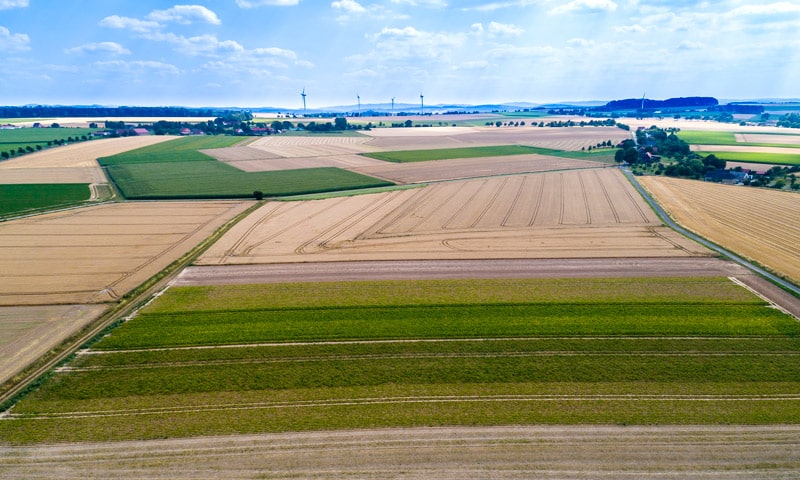Suppose that Jane owns a large piece of land in Utah. She decides to divide up her land and sell a smaller portion of the land to Rick. The land that Rick receives, however, does not have any direct access to a road. The only way for him to access his new lot is by crossing Jane’s remaining property. Rick’s land is completely landlocked. Can Jane prevent Rick from crossing her property?
When a piece of land is considered “landlocked,” courts will usually grant the owner of the land an “easement by necessity.” This allows the new landowners to create an easement to gain access to a landlocked property. “Landlocked” properties are generally properties that do not have any direct access to public roads from the property itself.[1] An easement is an interest in land owned by another person that grants a third party a right to use or control the land for a specific limited purpose.[2] In this specific scenario, the easement is the right to cross an adjacent piece of land to access public roads.
In order for a court to grant an easement by necessity, the landowner of the landlocked property must prove two things: (1) unity of title, and (2) that the easement is reasonably necessary to the enjoyment of the landlocked property.[3] After that, they can legally access their land by the neighboring landowner.
Unity of Title
Unity of title requires that at one point there was a common owner of both pieces of land, and that the owner then divided the property into separate properties.[4] In the case of Rick and Jane, there would be unity of title since Jane owned both her piece of land and Rick’s piece of land before the sale to Rick. In determining whether this requirement is present, courts will look for the exact moment at which “a loss of unity of property ownership landlocked one or more of the just-divided parcels of land.”[5] In other words, courts will look at previous ownership of the landlocked property and determine at which point, if any, the land was divided and the property in question became landlocked. After making this determination, and if the other three requirements are also met, courts will then only grant an easement of necessity across the land which was previously connected to the landlocked parcel. Courts have often held that access to public roads will not be granted across whichever piece of land is most convenient to the owner of the landlocked parcel, but rather, will grant an easement only across the previously connected land.[6]
In cases where there is no unity of title initially present (meaning there have been numerous other owners after the division of the land took place), courts may look at the history of the division of land until they find the exact moment that the land was divided. If, however, there is no point in time that the landlocked piece of land was considered to be part of a larger parcel of land with access to public roads, courts will often look to see how previous owners of the landlocked piece of land were able to access the landlocked parcel. Because this can be a source of costly litigation, when a sale of land is involved and the property in question is landlocked, it is important to make sure that an easement is contained in a written deed so that there should not be a question of how the land may be accessed.
Easement is reasonably necessary
The requirement that the easement be reasonably necessary for the enjoyment of the landlocked property is a public policy concern that was created by the courts. Since courts have a long history of preferring written grants of easements, the requirement of necessity limits the circumstances under which a property owner can cross an adjacent property without written permission from the owner of the adjacent property. By requiring that the easement be reasonably necessary, the courts have limited the use of the easement of necessity doctrine to situations where there is no other option for access for the owner of the landlocked property. In applying this principle, courts have denied a claim of easement by necessity where the owner of the landlocked property has an “express right-of-way”; meaning that an easement of necessity will be denied whenever there is “at least one access route to the property that the party seeking the easement could legally use.”[7] Because of this requirement, even if the only available access route to the landlocked property is inconvenient, undesirable, or indirect, if the access route is expressly granted to the property owner, the court will almost never find that there is also an easement by necessity.
In applying this to Rick’s case above, so long as Rick was not given an easement across any other pieces of land by which he could access the public roads, Rick will be able to obtain an easement by necessity across Jane’s land. However, if Rick is able to access the land across another property, and was given express permission to do so, it does not matter how inconvenient this other access point may be, the court will find that the easement by necessity is not actually necessary.
While obtaining an easement by necessity is one way to gain access to a landlocked piece of property, buyers should almost always obtain an express easement that grants access to the property prior to purchasing the property. Without an express easement, litigation may become necessary, something that could easily be avoided with the express grant of an easement.
[1] Savage v. Nielsen, 197 P.2d 117, 121-22 (Utah 1948).
[2] Easement, Black’s Law Dictionary (10th ed. 2014).
[3] Abraham & Assoc. Trust v. Park, 282 P.3d 1027, 1031 (Utah 2012); see also Tschaggeny v. Union Pac. Land Resources Corp., 555 P.2d 277 (Utah 1976).
[4] Tschaggeny, 555 P.2d at 280.
[5] Abraham, 282 P.3d at 1031.
[6] Id.
[7] Abraham, 282 P.3d 1027 at 1032.
—





Leave A Comment